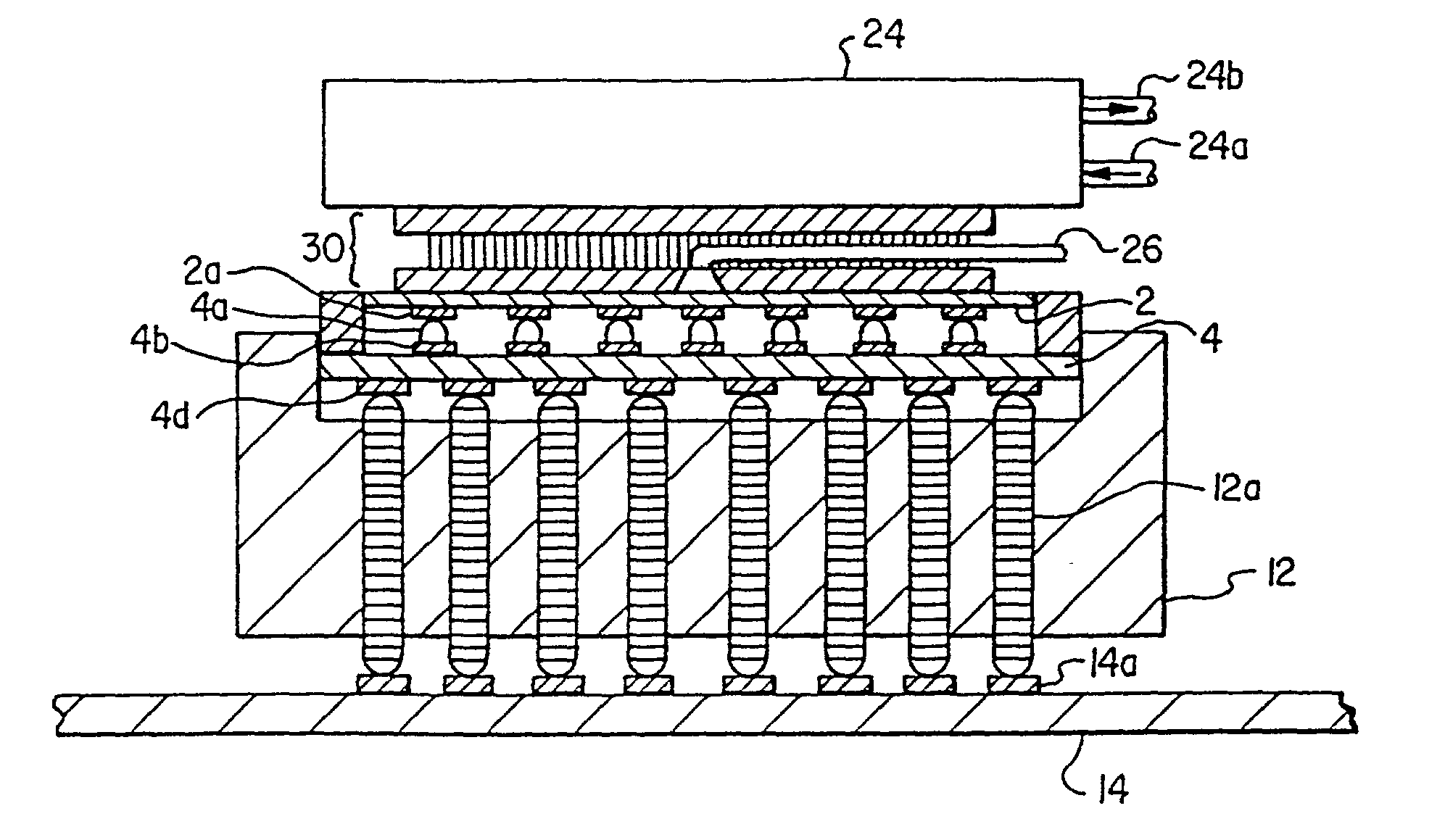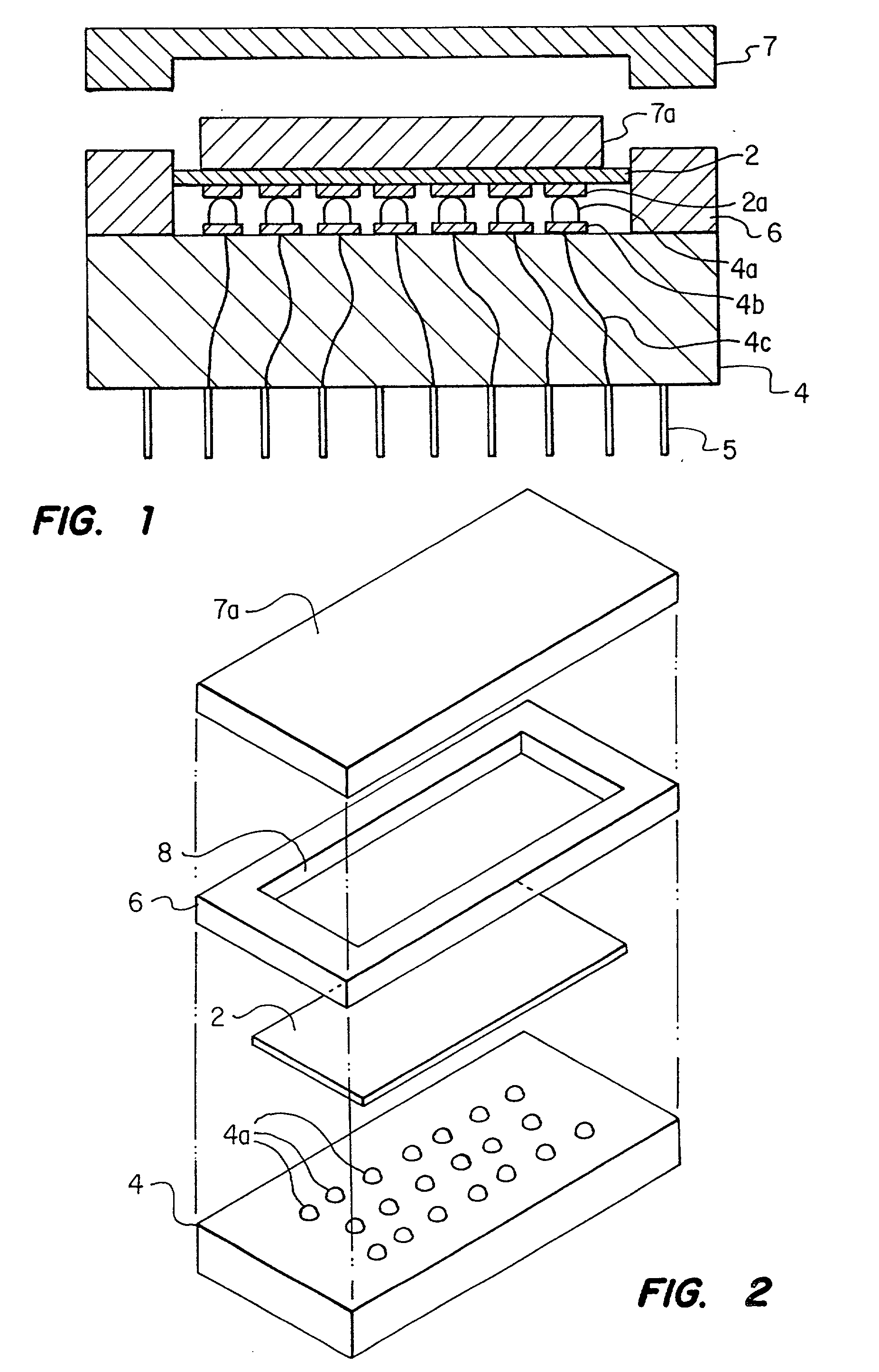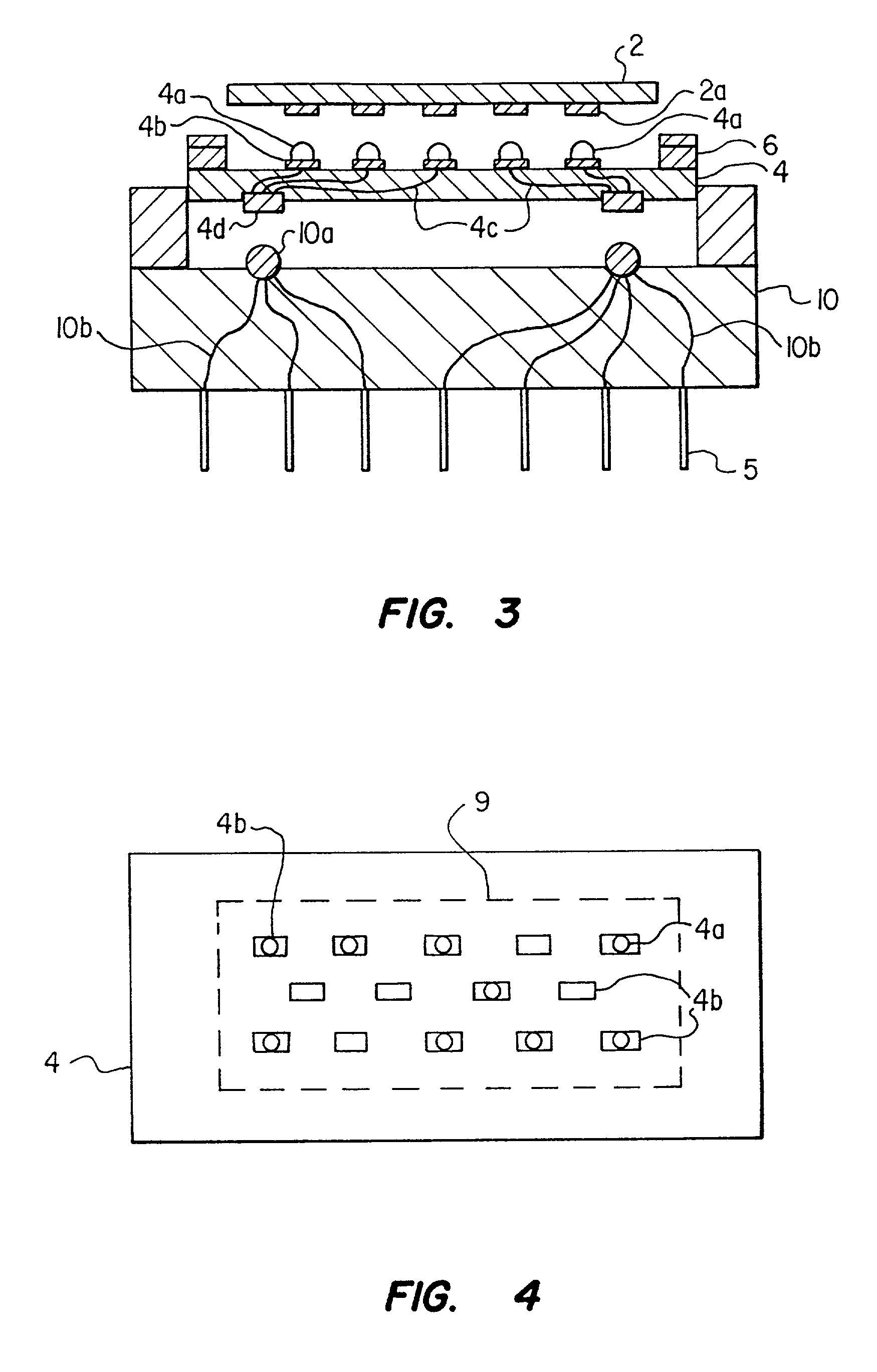Method for forming conductive bumps for the purpose of contrructing a fine pitch test device
a test device and conductive bump technology, applied in the direction of individual semiconductor device testing, semiconductor/solid-state device testing/measurement, instruments, etc., can solve the problems of high cost of die sum, low yield rate of such mcms, and incomplete packag
- Summary
- Abstract
- Description
- Claims
- Application Information
AI Technical Summary
Problems solved by technology
Method used
Image
Examples
second embodiment
[0052] In the means for connecting, as is shown in FIG. 3, a die carrier 4 mates with a carrier connector 10. The circuit pads 4b of the die carrier 4 are placed upon its top surface while its connection pads 4d are placed on its bottom side. The carrier connector's connection pads 10a are individually connected to the leads 5 of the carrier connector 10 through connection lines 10b.
[0053] The connection pads 4d of the die carrier 4 and the connection pads 10a of the carrier connector 10 can be arranged in any format. One good arrangement is to have a row of connection pads 4d of the die carrier 4 at each end of the die carrier 4. The carrier connector 10 contains a similar arrangement wherein the row of the carrier connector's connection pads 10a on the carrier connector 10 is designed to make electrical contact with the row of connection pads 4d of the die carrier 4. The arrangement of carrier connector's connection pads 10a is immaterial so long as the placement corresponds with,...
third embodiment
[0054] In the means for connecting, as is shown in FIG. 5, a surface mounted carrier connector 12 is mounted to the surface of a burn-in board 14 (or "mother board"). However, instead of utilizing metal pins (not shown) which must be soldered to the burn-in board 14, this surface mounted carrier connector 12 uses an elastomeric interconnection lead 12a, as disclosed by U.S. Pat. No. 5,074,947, to establish electrical continuity between the burn-in board connection pads 14a and the bottom connection pads 4d of a die carrier 4. Use of this type of carrier connector for surface mount applications is advantageous because of lower labor cost in installing it when compared to the carrier connector 12 or any other device utilizing metal leads 5 which require soldering of individual leads 5. Further, the elastomeric interconnect leads 12a have an increased frequency bandwidth in comparison to the thin metallic leads 5a of the standard carrier connector.
[0055] Referring again to FIG. 2, the ...
PUM
 Login to View More
Login to View More Abstract
Description
Claims
Application Information
 Login to View More
Login to View More - R&D
- Intellectual Property
- Life Sciences
- Materials
- Tech Scout
- Unparalleled Data Quality
- Higher Quality Content
- 60% Fewer Hallucinations
Browse by: Latest US Patents, China's latest patents, Technical Efficacy Thesaurus, Application Domain, Technology Topic, Popular Technical Reports.
© 2025 PatSnap. All rights reserved.Legal|Privacy policy|Modern Slavery Act Transparency Statement|Sitemap|About US| Contact US: help@patsnap.com



